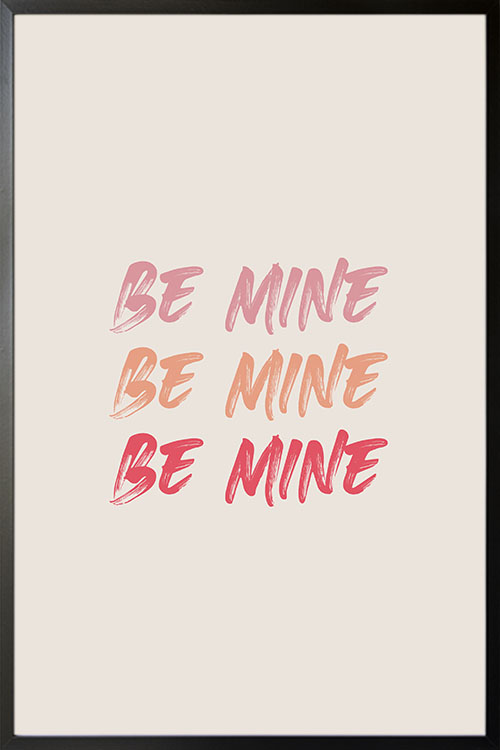
A simple yet impressive work of art in a poster print. Add cute and lovely art on your walls with Be Mine poster. This is a stylish poster that will evoke a romantic vibe to your space.
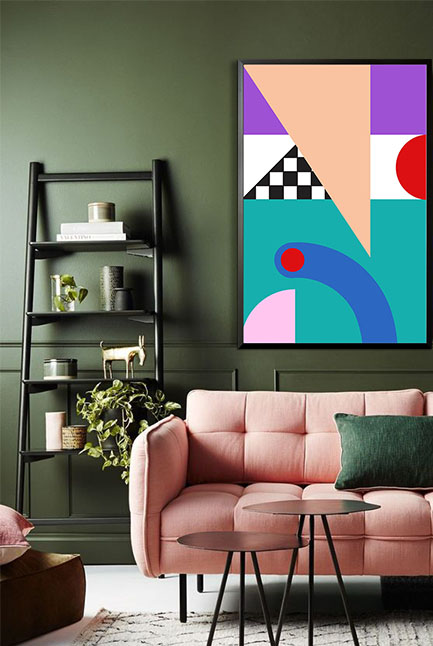
It is a fact that the 80s design style is making a comeback. Many of us have witnessed the highlights of the decade and there are many good words to describe them. Technology may not be that advanced at that time, but life was enigmatic. Kids then were more engaged with physical activities. Music and films were also phenomenal. Of course, the styles then were remarkable. Though there are things that should be left behind, the 80s design style defies that catch-phrase. It keeps coming back and there are many good reasons why.
It is no joke when you hear that the 80s design is synonymous with “bad taste”. In fact, there are many queer styles that emerged during the decade. But, just like any other thing, the 80s gave birth to extraordinary creativity and freedom of design. Although it is a period of experimentation and trials and errors, we can learn so much from the 80s.
To make things more fun and exciting, the 80s design cradled some of the very diverse movements. For instance, the 80s design style was greatly influenced by art deco. The interior is seen with lots of mirrors, while the color palette is filled with soft colors and pastels. Furniture pieces were bold and heavy and can be overwhelming at first glance.
The 80s also became popular because of Shabby Chic design style. Old items underwent upcycling to add a touch of elegance and sophistication. It is also common to see chintzes, antique chandeliers, skirted furniture, and creamy colors in the 80s. Though these were popular decades ago, they still remain famous up to this day.
The most striking of all is the Memphis design since it is about the use of colors, patterns, and others. Many find this style bizarre, but it has elements that make it appealing and stimulating.
If you think that achieving the 80s design style is challenging and complicated, think again. You may already have some items needed to look like the 80s. Huge rooms, carpeted bathrooms, psychedelic colors, geometric patterns, and more. Some of these may have gone too soon but there are those that still hit the trend these days.
The color wheel plays an important role in interior design. When talking about the colors of the 80s, just think about the wildest and boldest color combination that you can imagine. At first, the dominant colors are pastels along with black and white, teal, and coral. The Memphis design introduced color blocking with primary colors.
Geometric patterns are common in the 80s design style. Other styles that are recognizable are animal prints and doodles. Be sure that these are colorful and funky.
Color blocking is the mixing of two to three bold and contradictory colors. As a result, bold statements are created.
80s interior design style is not about being subtle and classic. It is about decorating your home to your heart’s content. Sometimes decorating the interior means matching the patterns on your furniture, rugs, dress, and others. Think about being unusual and bold.
Happy decorating!
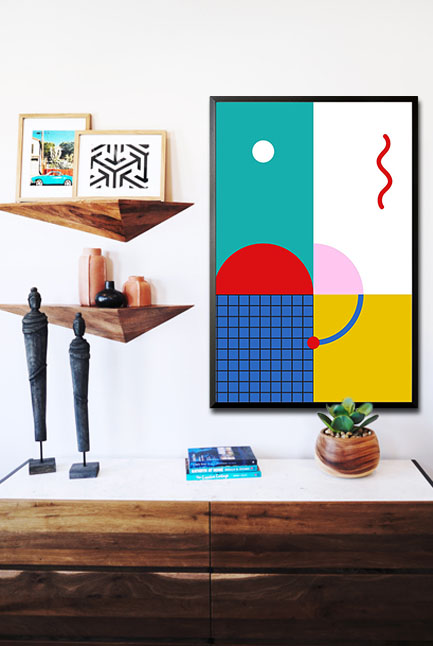
Take a walk down memory lane and see how beautiful the styles that are popular even in films are. You probably have used them in your home for years until other trends have come along. These days, the styles of the 80s are making a comeback and are being used in many homes, offices, restaurants, and other establishments. Read on to know more about the styles that many people have loved over the years.
Chintz is a printed cotton fabric with a glazed finish and multicolored patterns. It was originally used for upholstery, curtains, and clothing. These days, chintz refers to the floral patterns seen in fabric and other decorative materials, such as wallpaper. It is common to see designs and patterns such as nature, flowers, and leaves.
Pastel colors belong to a pale family of colors that are described to have high value and low saturation. The colors of this family are considered to be soothing. The most commonly used pastels are pink, mauve, baby blue, mint green, peach, periwinkle, and lavender.
Country interior style is any design that appears casual and cozy. The overall appearance eludes the feeling of simple country life. It includes color palettes that are bright along with pastel colors. In addition to these, the colors should also be able to blend perfectly with other design elements like vintage wares and second-hand accessories.
Verdigris is a green or bluish patina that forms on copper, brass, or bronze surfaces that is exposed to air for long periods of time. It consists mainly of copper sulfate.
The open kitchen is a remarkable design for homes that are small. The absence of barriers or doors allows spaces to flow into each other. This design makes the home look more spacious than it is. The good thing about open kitchen design is that it also keeps the family in touch by integrating meal preparation with nearby activities like watching television in the family room.
The Memphis Design is one of the most popular styles ever created. It is known for the use of bright neon, primary and pastel colors, geometric shapes, and bold, repetitive patterns, such as black and white stripes.
Preppy interior design showcases genteel mix patterns. Plaid is the traditional pattern of preppy style, but not the only one. Think about stripes, houndstooth, herringbone, and gingham checks mix to create a curated look that is anything but stuffy.
Shabby Chic is defined as having a soft, relaxed, romantic style that appears cozy and inviting. The design style usually is related to females, On the other hand, masculine shabby chic appears to be rusty, along with deeper or richer colors. Other decorative items that may be used to achieve the design style are rustic furniture, unfinished wood, denim, burlap, sailcloth, and homespun.
Soothing and spiritual, Japanese-inspired design was a popular trend in the 80s. Zen refers to meditation and has become a popular principle for interior designers. The design style focuses on creating balance, harmony, and feelings of relaxation through a minimalist approach.
After seeing all the awesome photos from our participants, artdesign has finally chosen the winners of the 2021 Photo Competition. With the theme “Beautify Your Walls with Natures of the Philippines”, a total of 385 original photos were submitted by our patrons from all over the country. From these, the top 20 entries were based on the number of online votes they have gathered. Among the 20 finalists, the top 3 were decided by the members of the jury of artdesign. Thank you for joining & see you again next time for this year’s competition!!!




Looking for unique and amusing ways to decorate your home? You might be surprised as some retro designs are making their comeback and funky and neon colors are among them. These two color schemes are too exciting to use and fun to look at. These color schemes might be the answer you are looking for to personalize your rooms. These can also add depth and warmth to your design along with matching decorative items.
Evoke a retro feel in the room with funky colors. Forget about traditional colors, the funny ones will make a difference to what interior decoration is all about. Create an accent wall and let it become the focal point of your room. With the use of funky colors and patterns, you can easily create a highlight in the room. This can be done with the display of posters or even with the installation of wallpaper.
After the wall, you can further improve the room’s appearance with fabrics. Infuse a comfy and relaxing vibe with fabrics in neon or funky colors. As such, you will also have a room with a nostalgic vibe. Neon pink, neon orange, hot pink, or plush velvet are some of the hottest picks when it comes to colors.
Neon colors were popular back in the 70s and 80s. Today, the colors are making a comeback although not commonly used in homes, offices, and other establishments. However, neon colors have a lot of potential in creating beautiful spaces. The use of neon need not be overwhelming as there are many ways on how to add them to your homes.
Neon colors can be used to brighten up any room especially those with dark walls. With the addition of neon-colored items like lampshades and throws, you are able to add a little personality to your space. Furniture pieces are also a great addition to make your home look fun and exciting. However, bear in mind that anything too much is not good. Too many neon colors may also be an eyesore. Choose where they will be added so as to complement the overall appearance of your home.
At first, adding neon colors may be intimidating. But once you start using them, you will realize that it is fun and thrilling. Every home should reflect your personal style and taste so be creative in using neon colors. There are different ways, and the easiest one is with the display of posters.
Bringing back the past is one of the coolest ways to level up your home interior. We know that the 70s or 80s designs are not for everyone, but with the right touch, they can be captivating. Achieving the style may be challenging at first but as you go along you will see that it is fun combining colors and furnishings.
Funky and neon colors are likewise not for the faint of heart. They are loud and bold but the impact they give is simply amazing. With the use of posters, you can easily achieve the style that you want. Add pops of colors in prints and your home will have that eye-catching look that you will love.
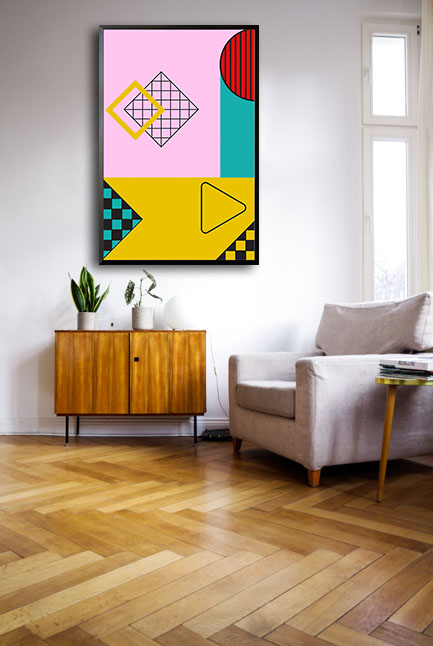
There are so many things that can be said about the 80s. This decade of new wave likewise gave birth to amazing decor trends. Although the 80s design style has retro elements, it is still employed in many homes and establishments. From brightly colored furniture pieces to geometric patterns on your walls. These decor elements will surely complete your day and make you feel like you are back in time again.
Lucite is a clear, thick plastic that works great in rooms where you want to avoid adding too many textures and clutter. This is a decor trend that started in the 80s and never went away.
The 1980s is never complete without the images of neon lights and bright colors. The incorporation of neon lights in prints can simply add a retro design to your room. Display neon-themed posters to add accent to your walls. Whether in the bedroom or living room, neon prints will surely be a trendy 80s design that you will adore.
Brass is another material that was popular during the said decade. It is bold and loud and when used in furniture the material can give a fun and whimsical feel.
Memphis design was a movement that started in Milan, Italy in 1981. It is characterized by all things colorful, abstract, and loud. Achieve the design style in your rooms with abstract art, abstract-inspired throws, and bold colors throughout the textiles.
The great thing about the 80s is that the design trends were contrasting. Pastel is a great alternative if you are not into neon and bold colors. Pastel colors make a lovely interior. Consider using pastels in the children’s room for a cool and interesting ambiance.
Tropical prints were loved in the 80s, as well as tropical plants. Add a retro style in your rooms with tropical prints, especially with palm trees or leaves. As such, you will be adding a summer vibe to your home.
Want to add a touch of 80s in your rooms? Add rounded decorative items such as vases, mugs, and candle holders. Match them with pastel colors and bring the retro feel to your home.
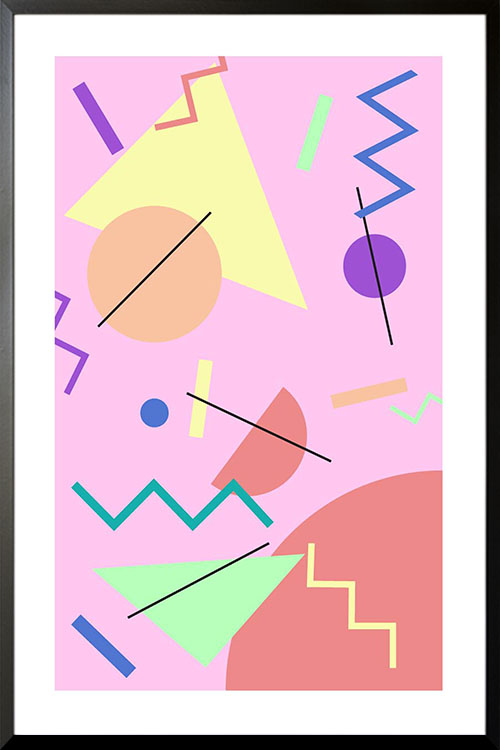
Over the years, geometric patterns have been one of the most popular decorative elements and can be used in any design style and blend with different colors. You can see them almost anywhere: in homes, restaurants, and offices around the globe. Geometric shape designs are eye-catching and can brighten up any space. Read on to know more about geometric shapes and how they can transform any living space into something appealing.
Geometric patterns are probably one of the most versatile decorative elements. It can be added to any interior design style. Polyhedrons are some of the famous shapes and can be used in various furniture pieces and their parts. For instance, polyhedrons can be used from table legs to lamps and photo frames. Recently, rhombuses are commonly used in kids’ rooms, floors, and bathroom walls.
With these on the walls, you can also create a wonderful pattern. This can be achieved with the installation of wallpaper, wall murals, or posters. Among these, the display of posters is the easiest and fastest way to create a trendy wall design.
The versatility of geometric patterns makes them ideal in both classical and modern homes. They can easily be incorporated to create any design style that has been popularized in their respective eras. For instance, geometric patterns are ideal if you want to revive the psychedelic look of the 60s or the digital appearance of today.
Any color goes well with geometric patterns. The use of bright and cheerful colors like orange, red, yellow, and purple will help create more fun, exciting, and modern vibe. However, warm colors, such as these, must not be overused as they can be an eyesore. In moderation, they can take the center stage and be the focal point of your rooms.
The use of neutral colors like black and white will help create a sophisticated and elegant look. This combination can also help create a minimalist appearance that likewise offers a comfortable and cozy feel.
Modern decorative shelves come in different shapes, sizes, and materials. Personalize them with a mixture of different shelves to create a room focal point. Geometric shapes can also be incorporated with the installation of partitions and wall panels. These are subtle and understated structures that will not overwhelm your rooms.
Want to be creative and unleash your artistic side? Paint your walls with a variety of colors and geometric shapes. Prepare the materials you need like a roll of masking tape, paintbrush, and paint color of your choice. With these, you will be able to create a crisp and clean pattern that you and your family will love.
Geometric patterns on the floor are likewise eye-catching. Squares, hexagons, and zigzag patterns are cool and you can be creative by arranging them in whatever look you want. Rugs and carpets are likewise great to display geometric patterns. There are geometric rugs and carpets available in the market that can transform the appearance of your walls.
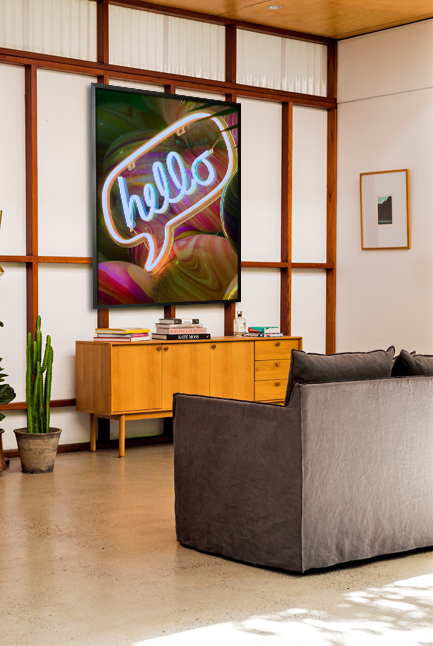
Neon colors have been popular in the 70s and 80s. The colors may rarely be used these days, yet they have a lot of potentials when it comes to creating beautiful spaces. In fact, there are many ways you can use neon to complete the appearance of any room. However, unlike the regular colors, you need to be careful so as not to overdo it. Remember that anything in excess is bad. Too many neon colors in the room may be an eyesore
Bare white or gray walls are boring. Decorating them with neon serves as an accent without being too loud for the eyes. Display neon posters or paint a small corner with neon-colored paint. The doors may also be colored with neon to serve as a room focal point.
In contrast with what many people think but neon colors can blend well with both light and dark-colored interiors. For example, rooms in hues of gray, black, brown can be decorated with bright neon to add a little drama.
Blank white walls can be treated like a blank canvas to create your art. As such, you can add furniture pieces in light pastel colors. You may also add other decorative items in neon colors, like vases, throws, and lampstands. However, too much neon-colored furniture can be painful to the eyes. Three pieces of neon furniture pieces will do.
Choose a wall in your room and paint it neon. This may be challenging but the effects will be monumental. This will give any room a fun and adventurous vibe. Just be reminded not to color your bedroom with neon colors. You can do this in the living room or dining room walls. Finish the room appearance with black and white furniture items, and voila!
Seems like adding neon colors to your home may be challenging. Yes, it may be but beautifying your home with neon colors will have a unique and interesting effect that cannot be seen in other decors. Remember that the appearance of your home is a reflection of who and what you are. Therefore the decors and colors should be carefully chosen to create an eye-catching home interior.
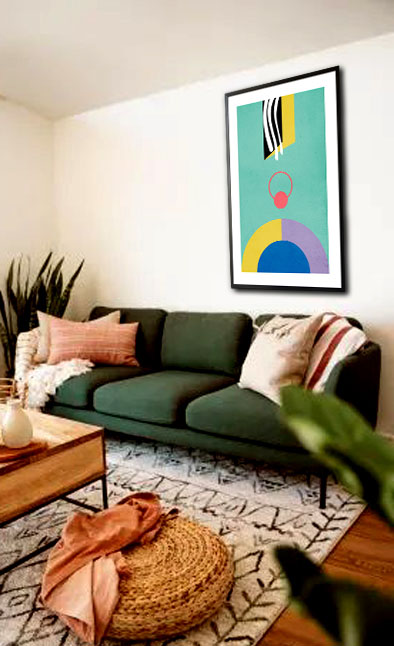
A retro style in decorating your home does not only focus on one aspect. It actually encompasses different decades of styles. These have been influenced by several trends and styles from the past. Although the term “retro” refers to something in the past, it actually describes the decor from the 1950s, 60s, and 70s. A retro design style has a fun and lively feel that is characterized by bright colors, wild designs, and an overall sense of flair. The retro design style requires a bold approach and likewise requires a certain personality to achieve it. Bring the design style to your home with the elements and inspiration below.
Furniture pieces in retro style have an abstract feel to them. It also seems like every piece is almost fighting to be the focal point of the room. The sofas are usually broad and elongated that are also decorated with multi-colored pillows. The materials used in barstools are usually shiny and metallic along with bright red seats. The retro design style is also complete when Mitt chairs and puzzle-piece ottomans are added.
Choosing the colors that help achieve the design style is not that hard. You can choose from avocado green, mustard yellow, brown, black, white, and red. The combination of purple and hot pink is great to achieve the style. You can also have mixes of bright orange, green, indigo blue, and yellow. The retro era is also popular for tie-dyed fabrics, checkered patterns, and elaborate paisley prints.
Go retro with shag carpeting, smooth plastics, soft vinyl, and crushed velvet. When achieving the style, remember to go bold.
When it comes to decorating, there is actually no limit. Add accents and accessories like fuzzy throw rugs, door beads, lava lamps, skate tables, and scoop stools. It is also common to see bold and unusual art and sculptures. These pieces tend to be abstract in nature rather than simple still-life and landscapes. When it comes to flooring choose from natural wood, shag carpeting, and a bold mix of tiles. Placed in a checkerboard pattern.
Get the retro style with floor lamps and lamps with square or tasseled shades. You can also choose a swag multi-colored chandelier that plugs into a wall socket and feature a dangling cord draped from hook to hook.
The retro design style is fun and exciting. There’s no doubt about that! It is all about the blending of shapes, textures, and colors. The furniture of the retro era is sturdy, durable, and functional. Achieving the design style is requires attention to detail and it is important to be versatile with the materials and decors available. Remember, anything goes, and do not tone down a retro-style decor.
Memphis design style is making a comeback. Many homeowners and designers these days prefer the colorful trend in their living spaces. In fact, the design style is also used in fashion and interior design all around the globe. The colorful interior appearance can totally satisfy your cravings when it comes to room decorations.
Memphis design is all about patterns, geometric figures of Art Deco, the color palette of Pop Art, and 1950s kitsch inspiration. The combination of these inspirations brings an elegant and modern touch to your home. These traits are what make the Memphis design style adored by many homeowners and designers. If you want this style in the living room, try to add the elements that will help you be successful in your project.
If you are wondering how to achieve the design style in your living room, here are some cool ideas that will make you successful with your decorating project. Some materials of the Memphis design style can easily be incorporated into the living room. Examples of these are laminate and terrazzo materials for the flooring, tables, lamps, bright and multi-colored objects, shapes, rectangular or circular chair legs, and patterns with different geometric shapes and colors.
The use of bold colors and unique shapes are vital to achieving the Memphis design style. With contrasting floor decor, furniture pieces with bold colors along with colored art can bring the retro appeal that you have been longing for.
Geometric shapes are likewise keys to a fantastic living room. There are many ways to add this element to the walls. Installing wallpaper and the display of posters can easily make the wall look like the ones seen in the movies that became popular during the 80s.
In addition to these, the colors are supposed to be fun and exciting. The geometric shapes are also great addition to boost the appearance.
You can also add a minimalist style to blend with the Memphis style. Armstrong floor can help achieve the look and this can be personalized in black or white. The good thing about this idea is that Memphis design style does not follow a strict rule. You can always be flexible to make the living room look more desirable.